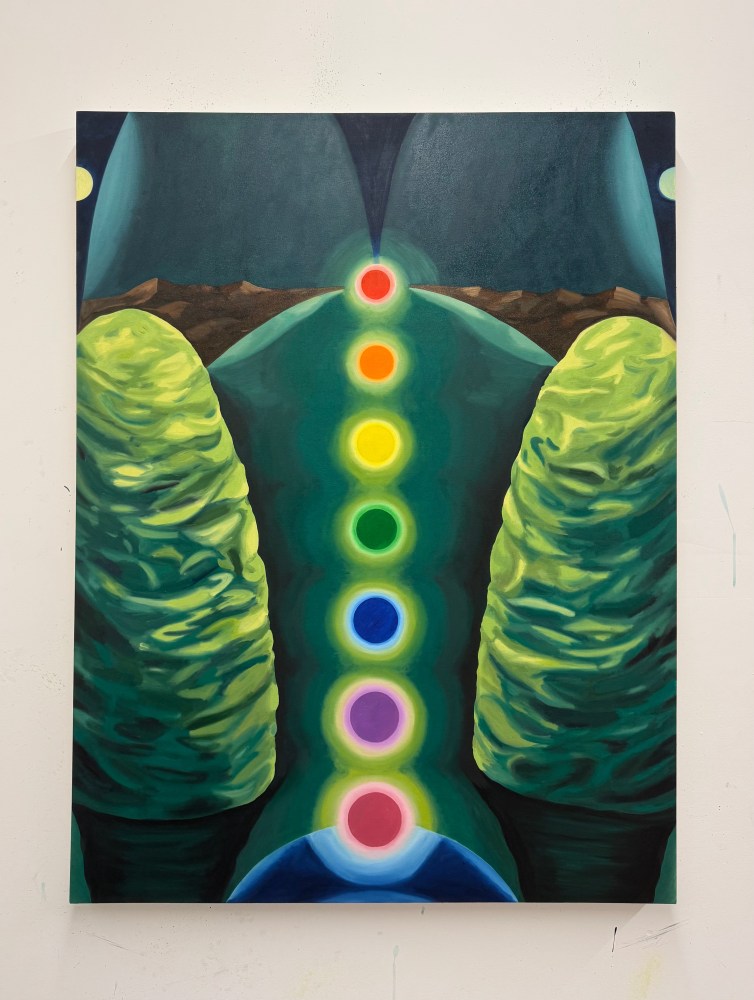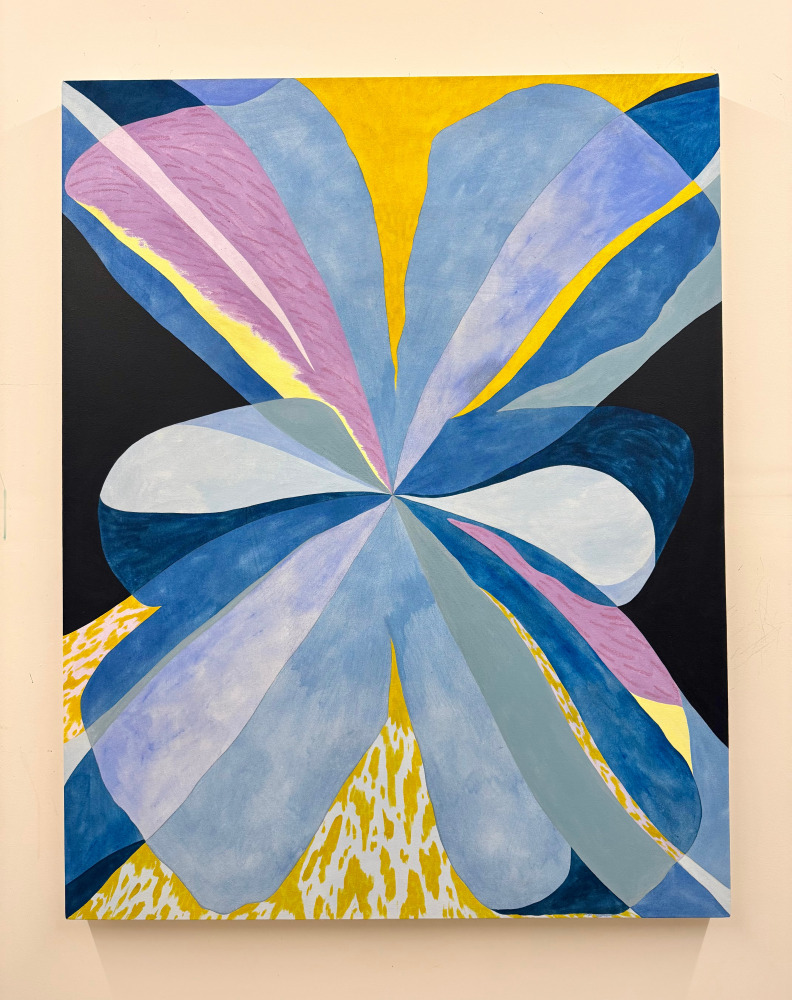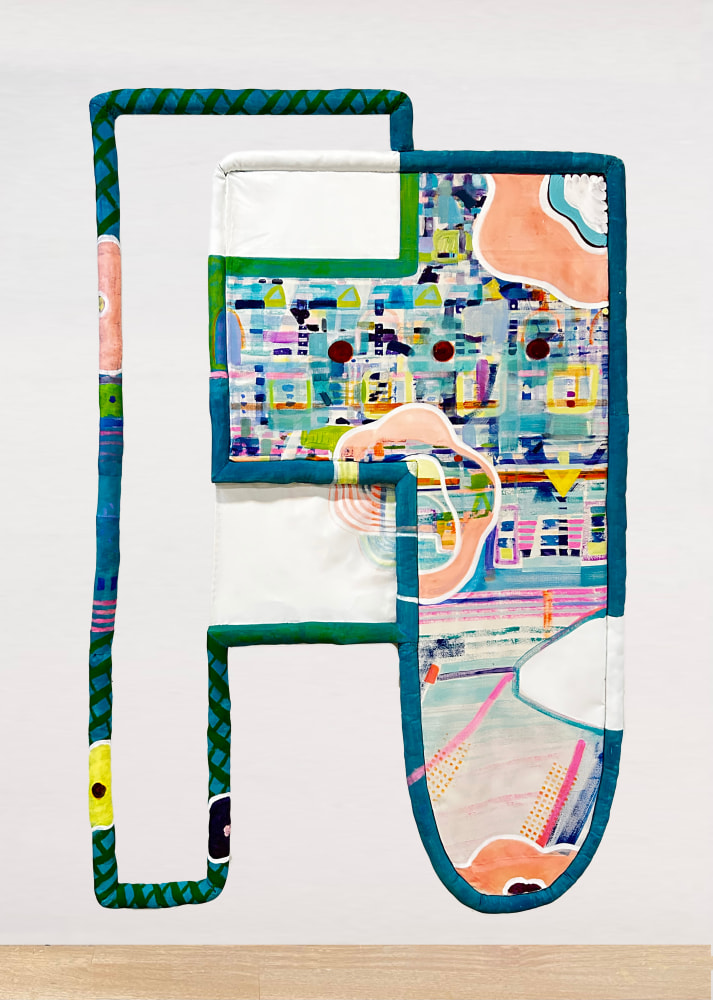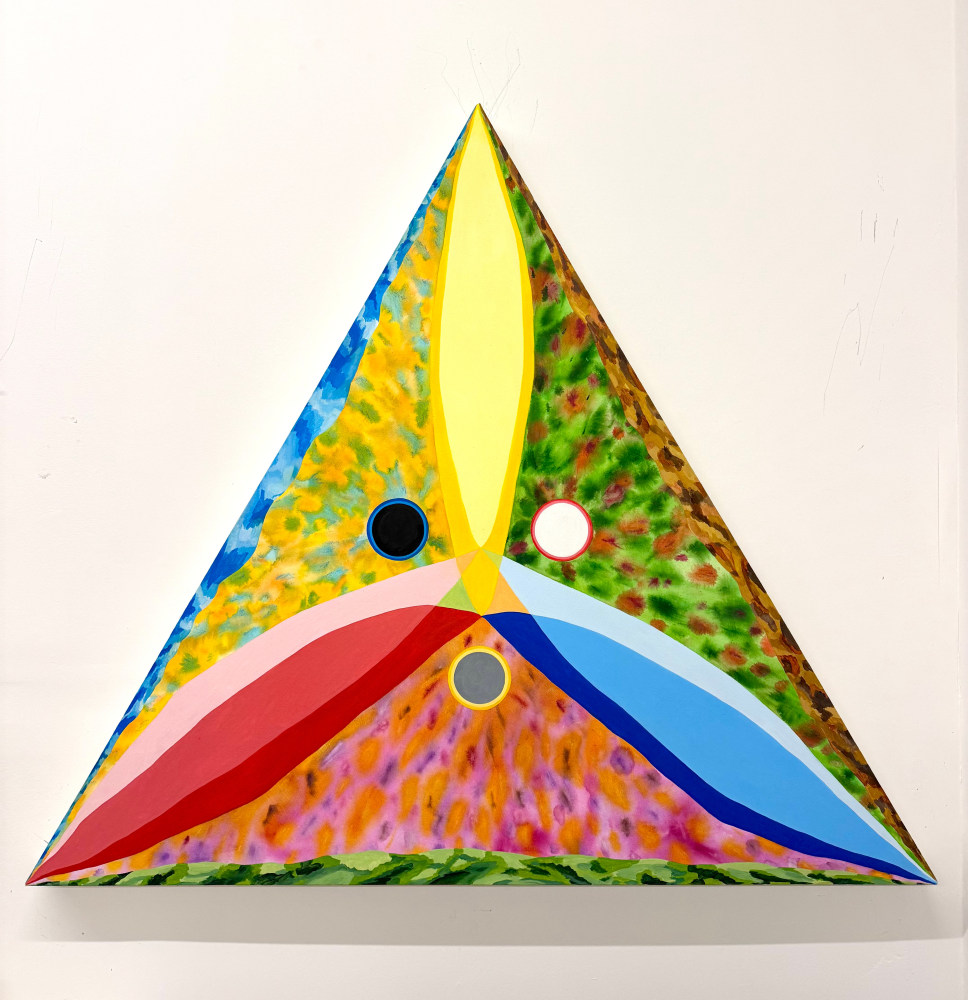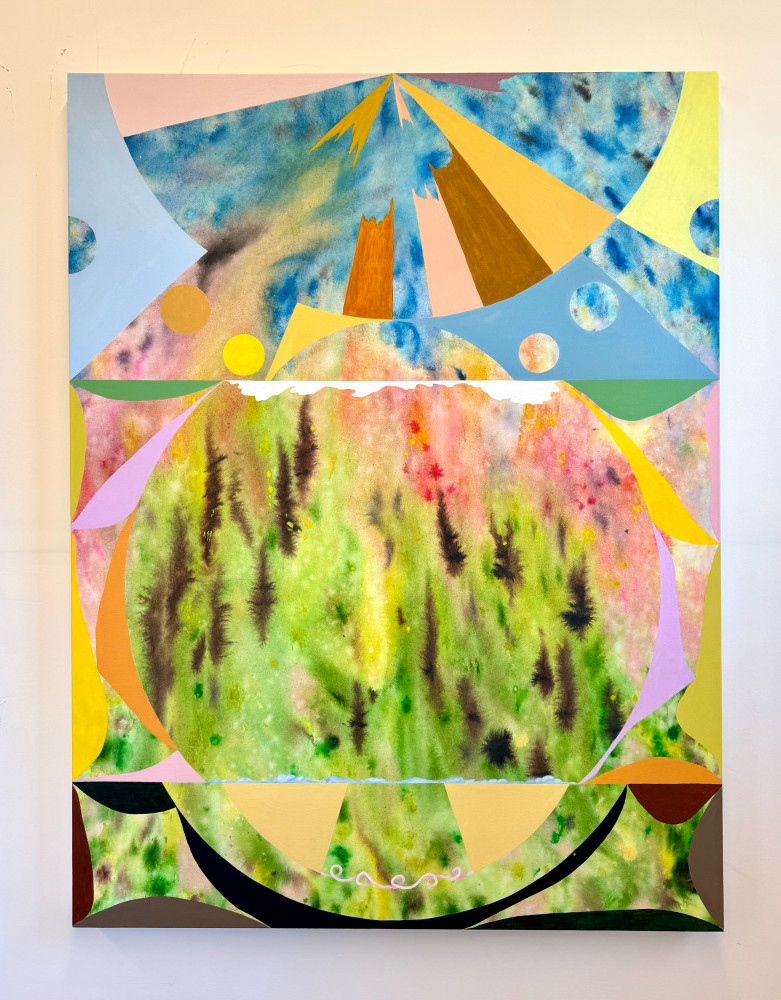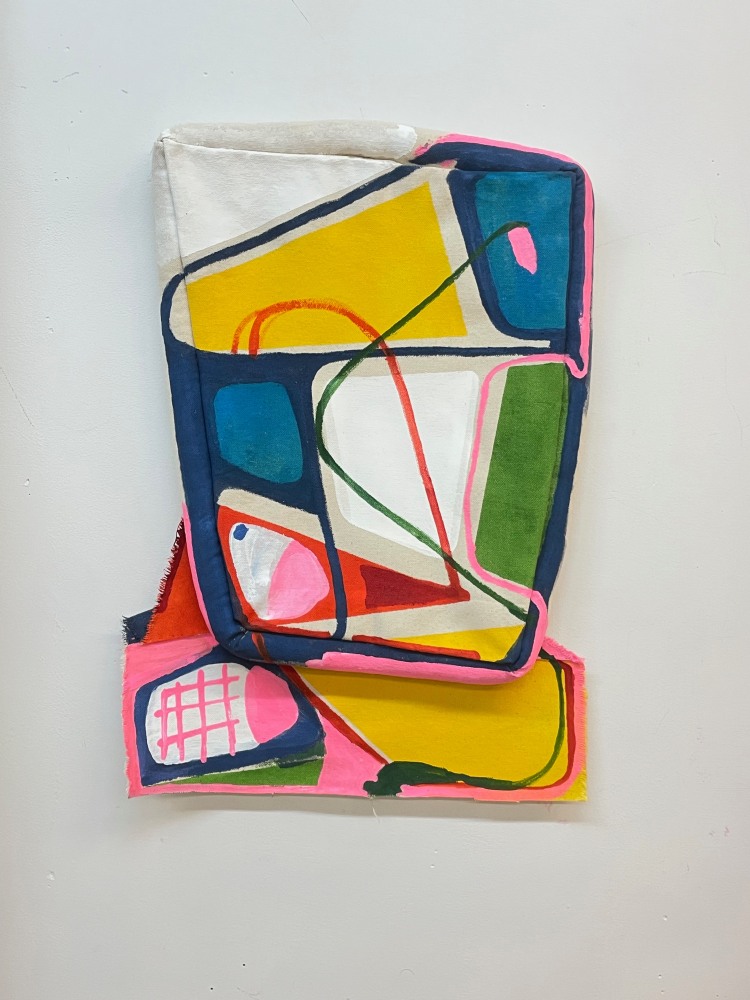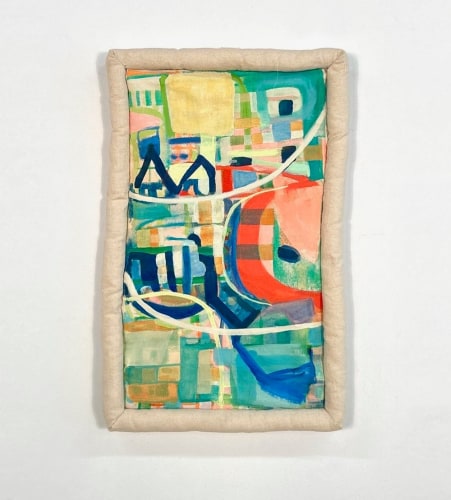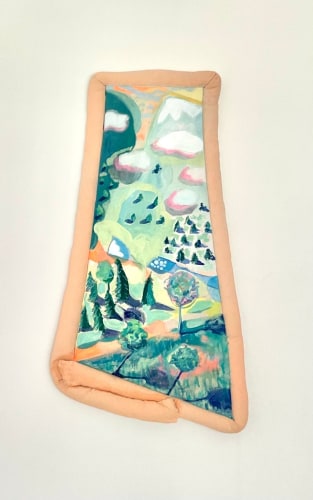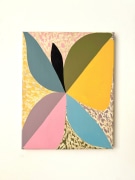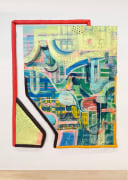Freight + Volume presents Duet, an two-person exhibition featuring works by Kelly Worman and Jai Hart. Duet will be on view from April 11 through May 10, 2025. This is Worman’s and Hart’s first showing with the gallery.
Between Jai Hart and Kelly Worman there lies a placid, almost whimsical seriousness that opens up the formal registers of painting, while also making it accessible in unique ways. What the viewer may notice first is both artist's shared sensitivity to color. Worman, informed by color theory, uses the canvas as a living archive to capture the interplay of measured fields of color. At once gestural and geometric, her works often take their point of departure from sacred sciences
(astrological or Pythagorean), delving a feeling of precariousness culturally rooted in a hunger for healing, a transcendent sense of hope. Jai Hart, in her works, attaches color to reimagined landscapes. Often alluding to particular cities and places, her paintings remap memories and sensations, inviting viewers to novel encounters with site in the context of their immediate environment.
For a work like “Mars in Leo” (2024), Worman actually assembled the details of the painting from Nov. 3rd through Dec 6th, 2024. In this almost symbolist fashion, cultural particulars are alchemized into poignant contrasts of color. The results of the presidential election are
transformed into chaotic daubs of paint, providing the counterpoint for more sustained formalism of the painting’s petal-like anthesis. Cut diagonally in half, the denial of exact symmetry feeds into the way the picture seems to redouble itself, transferring its energy from lighter colors onto darker ones. The suggestion of time apparent in the title of the work is reflected in this measured displacement of analogical parts. The painting expresses in a constellation of gestural shapes
what figuration alone could never encompass.
Jai Hart, for her part, warps the immediacy of her source images, making them more formalist and softly uncanny. In a work like “Isoline Mapping” (2024), the suggestion of a cityscape is apparent. But the weirdities that transmogrify the image, as though pixelating our perception of it, continues into the stuffed canvas tubing that contours the work. In “Isoline Mapping,” the tubing opens up the painting to incorporate the dimensions of the wall as backdrop. In another painting, Some Say "Stronger Wind = stronger tree, Stop blowing! give them a little hug! (2024) the tubing works to make the scene depicted more tactile, even intimate.
Both artists communicate a warmth and an intimacy that has less to do with the structures and techniques they respectively put into their works, and more with how they rebound from the imagery they thematize. Worman, starting from color theory, uses it as a substrate to express the nervous rhythms of conscience, the lived duration of the artist as she renders her work visible. And Hart’s landscapes, mapping out definite vistas, take on a renewed formalist space when they combine with the tubing she enframes them with. Both artists take great care to reproduce the artificial boundary line separating natural structures from human interventions. Sublimating our contemporary moment, they lead us into uncannily placid representations of embodiment, which feels equally intimate and elusive.

